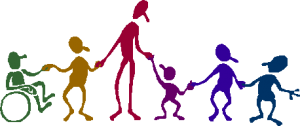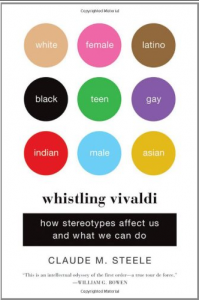 Have you ever wondered if our students with physical, learning or mental health disabilities feel socially excluded in our classes? Do we at times, unknowingly exclude students academically, too?
Have you ever wondered if our students with physical, learning or mental health disabilities feel socially excluded in our classes? Do we at times, unknowingly exclude students academically, too?
The Individuals with Disabilities Act (IDEA) 1990, is a United States federal law that addresses the educational needs of students with disabilities. Since 1990, the act has been expanded and reauthorized several times
Laws such as IDEA can be enforced, but much of our behavior with one another is a different matter.
Instructors have numerous goals for the students in their courses; content mastery, critical thinking and communication. They also often want their students to bring to the world of work proficiencies in problem-solving, interpersonal skills and teamwork.
Most instructors do not set out to deliberately exclude students. They do so because of a lack of skills and discomfort.
Social exclusion is not accepting someone into our interpersonal and social networks. Students, who see themselves as excluded, may experience lower self-esteem, reduced motivation and minimal goal completion. To cope, students may pull away from their instructors, classmates and the course itself to off-set the stigma and isolation of being excluded. Some researchers include social exclusion under the heading of bullying. Other students may act out, including behaving in a needy and demanding manner, in order to obtain the attention they perceive the rest of the class is receiving.
Many of our students are at the psycho-social developmental stage Erik Erikson describes as Fidelity-Identity vs. Role confusion. Social relationships are extremely important at this stage. Our students are asking “Who am I?” and “What can I be?” Interacting with both college peers and role models is one of the ways our students can find answers to these significant questions.
I want to give you some examples of how I’ve dealt with my own discomfort and lack of skills in this area.
I’ve been teaching at NMC and the University Center for several decades. In every class I’ve taught, there has been at least one student with some form of physical, learning and or mental health disability. Often, there have been many. Most of the time, I’ve known this because the students have told me directly or I’ve received information the student authorized released. Sometimes, I’ve had a hunch based on my experience and education and I’ve privately asked the student.
In recent semesters, I’ve had several students taking psychotropic medications, one receiving treatment for testicular cancer, two students with autism, several students with insulin dependent diabetes, a student with a severe hearing impairment and a student living with AIDS.
In the beginning, one of the things I did was to make the climate in the classroom one where the class realized that diversity was the norm. Course membership often included students who were first-generation, non-traditional, international, military veterans, Native American, African American and so on. Physical, learning and mental health disabilities were described as a part of the overall strength of that diversity.
Next, I always privately asked the student how I could include them in all of the academic and social aspects of the course. I never assumed I had all of the answers or pretended that what might have worked for another student in the past, would work for this student. It was a bit uncomfortable to say out loud that I didn’t know exactly what to do. However, it was much more uncomfortable (and irresponsible) to not do anything or make a substantial mistake that could hinder the student. All of our students should be able to expect that we will work through our own discomforts and lack of information.
The students almost always had the answers and when we needed help, I contacted all of the resources within NMC/UC and our larger community. For example, one of the students taking psychotropic medications experienced dry mouth and needed to keep refilling her water bottle. She decided she wanted to sit near the door so she wouldn’t disturb anyone. Socially, she decided to first tell the members of her small presentation group about her medications and the effects and later she gave a short presentation to the whole class. Many students in the class now viewed her as courageous and followed suit by sharing their own information. Before she explained her behavior to the entire class, students didn’t understand why she often left the class and had initially judged her as a poor student they didn’t want to befriend.
 Additionally, students with learning disabilities who need to take their tests outside of the classroom in a learning center or such, may often resist doing so, due to the fear of being seen as different by their peers, and/or because they perceive impatience or annoyance by the instructor. An instructor can also model normalizing such accommodation by mentioning early, in the class syllabus, the options and instructions, without judgment.
Additionally, students with learning disabilities who need to take their tests outside of the classroom in a learning center or such, may often resist doing so, due to the fear of being seen as different by their peers, and/or because they perceive impatience or annoyance by the instructor. An instructor can also model normalizing such accommodation by mentioning early, in the class syllabus, the options and instructions, without judgment.
I also look carefully at the group dynamics in each class. I mix-up the seating over the semester, pair introverts and extroverts, use varied students in the class as my “keepers of the vibe” so I don’t miss any aspects of exclusion, create assignments so that everyone in the class gets to know one another, name plates are put out on every desk and I ask the class to constantly evaluate my efforts in this area.
At one point in one of our classes, we were reading Supreme Court Justice Sonia Sotomayor’s book, My Beloved World, and a discussion ensued about Sotomayor’s lifelong insulin dependent diabetes. A student in the class, asked me privately, if she could create a handout that she thought would help her classmates better understand the significance of Sotomayor’s accomplishments while managing her diabetes. The student included information about her life with diabetes in the handout and answered questions from her classmates in the open class. One aspect of the discussion was the affordability of health care. Most of the students shared, that like their classmate, they had experienced difficulty paying for some aspect of their medical treatment.
It can be powerful for everyone in the classroom when a student shares what they are dealing with relative to their disability/health issue. Whenever possible, I encourage the student to keep their sharing specific and brief. By helping the student normalize their physical, learning or mental health disability in open class, it furthers discussion amongst students on breaks, after and before class and outside of class.
We’ve all had students with poor or inappropriate social skills in class and watched as their peers turned away from them. One of my students with autism would sit in class and openly pull on all of the hair on her face, arms and legs. The behavior was a form of self comforting. By the second class meeting, I noticed that none of the other students would sit by her. I spoke to her after class and told her that the behavior was not socially appropriate and that she would need to do the behavior in private in the restroom or her car. I was calm, caring and clear in my intent with speaking with her. I also shared that the entire class had expectations for our behavior with one another, and that the behavior didn’t fit within those expectations.
I shared that I would give her a signal if I saw her starting to do the behavior and then she could either stop and redirect herself or go to her car or the restroom. By the next class, it worked. I was able to give her an inconspicuous signal and she stopped the behavior. Her peers sat next to her again.
Many of us use lots of experiential exercises in our classes. We also may take our students to other locations. I’ve learned that it is better to throw out an exercise than to overly try to make it fit for everyone. If the learning method is going to accent any student’s physical, learning or mental health disability, I don’t use it. If I’m unsure, I ask another colleague. Sometimes, I ask the student if they think it can work. I have found that students will often try to go along with an activity, when they shouldn’t. Excluding oneself and being seen as different can be painful.
All of our students come to our classes with needs as well as gifts. Showing students, through our behavior, that our classrooms are the perfect place to learn how to live and work with all people, is an important part of our college mission.
Further Ideas:
- Read the articles by Leanne Baumeler and Ed. Tech—learn tools to helping with student retention.
- Honor all examples of diversity across the student continuum. No singling out one group or student. Think of your classroom as a type of community. Look at the influence of “minority status” in your courses.
- Use all of our NMC resources- Student health services, developmental teachers, librarians, media/tech., student services, etc.
- Gain basic knowledge of disability culture.
- Model inclusion as the norm in your classrooms.
Resources:
- Susan Odgers, The Traverse City Record Eagle, November 2014 http://www.record-eagle.com/
news/local_news/adapted-in-tc- privilege-isn-t-always-about- economics/article_b4ded7f8- db86-56fd-a7bd-b8b25516ecaa. html - Michigan Protection and Advocacy Services, Inc. www.mpas.org
- Association on Higher Education and Disability www.ahead.org www.disabilitycomplianceforhighereducation
- “20 Incredible Colleges for Students with Special Needs” www.bestcollegesonline.com www.disability.about.com take a look at what makes a college appealing to a student with a disability
- “The Pain of Social Rejection” www.apa.org
- www.cyberbullying.us
- Disability Studies Reader by Lennard J. Davis 2013, Routledge
- Whistling Vivaldi: How Stereotypes Affect Us and What We Can Do (Issues of Our Time) by Claude M. Steele, W.W. Norton & Company, 2011.

